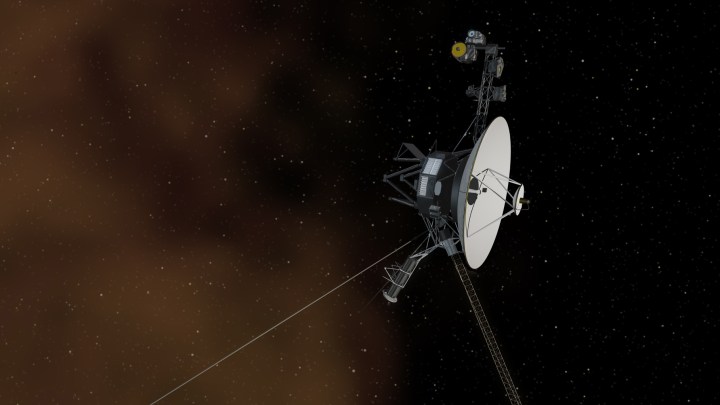
The two most distant man-made objects in the universe are the Voyager probes, launched in the 1970s. The probes zipped through our solar system and eventually passed out into the interstellar space beyond,. And in a remarkable feat of engineering, even though they are over 40 years old, they are still working and collecting important scientific data.
Recently, researchers checking over data from Voyager 1 came across a deep, continuous hum. This monotone drone is present even in the seemingly deep silence of the massive expanse of empty space between star systems. The researchers, from Cornell University, determined that the hum was due to the presence of interstellar gas — small amounts of hydrogen and helium present between star systems that form the building blocks of new stars.
“It’s very faint and monotone, because it is in a narrow frequency bandwidth,” researcher Stella Koch Ocker said in a statement. “We’re detecting the faint, persistent hum of interstellar gas.”
The hum was picked up using Voyager’s Plasma Wave System, which has been used in the past to detect changes in the interstellar gas caused by solar winds from the sun. But now it turns out these relatively dramatic eruptions happen against a background of the continuous hum.
“The interstellar medium is like a quiet or gentle rain,” said senior author James Cordes. “In the case of a solar outburst, it’s like detecting a lightning burst in a thunderstorm and then it’s back to a gentle rain.”
The fact that the researchers were able to detect the hum coming from the interstellar gas could suggest that the gas is more active than previously thought. By observing it more closely, researchers can learn about how it is affected by solar activity. This could be helpful for understanding space weather here in our solar system.
And it demonstrates that even instruments built quite long ago can still yield important data. “Scientifically, this research is quite a feat. It’s a testament to the amazing Voyager spacecraft,” Ocker said. “It’s the engineering gift to science that keeps on giving.”



